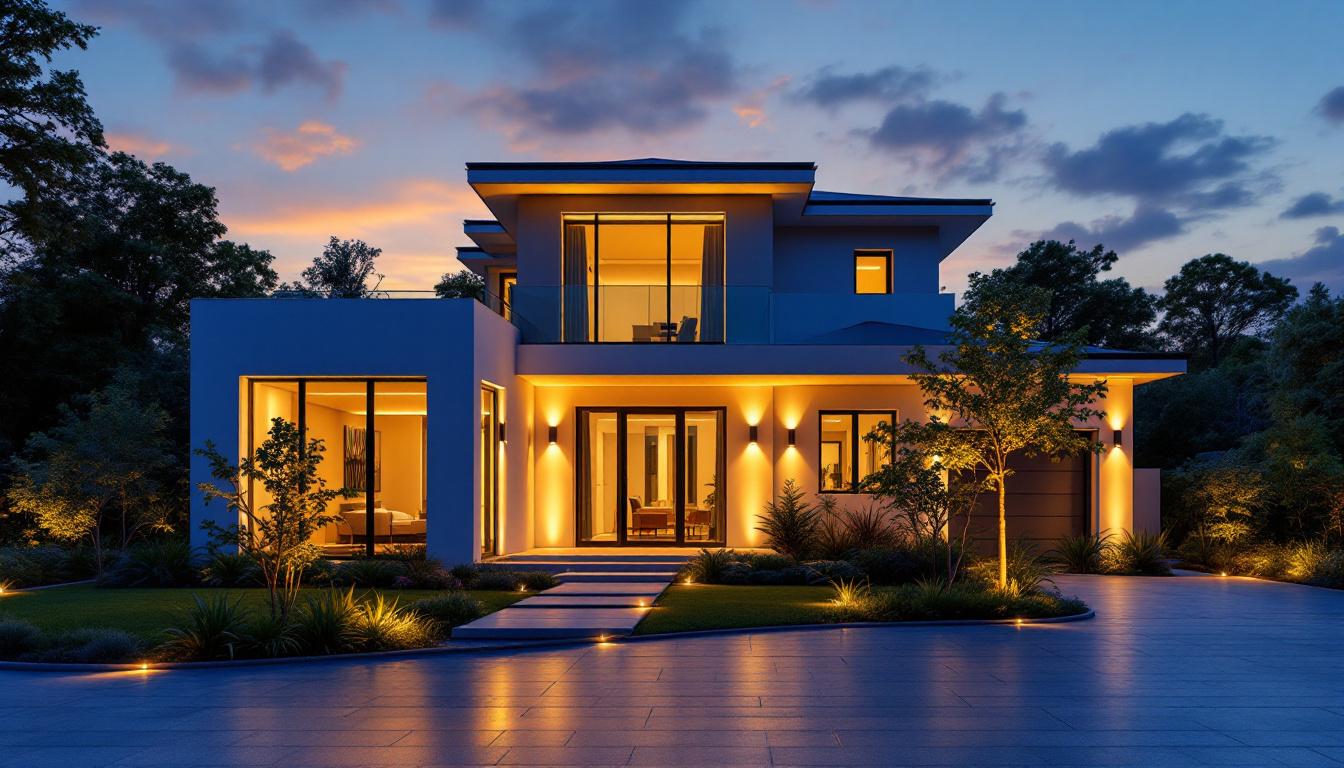
In the world of construction and renovation, lighting is often an afterthought, yet it plays a crucial role in the overall success of a project. Whether working on residential or commercial spaces, contractors must navigate the complexities of lighting design, supply, and installation. A single misstep can lead to costly consequences, not only affecting the budget but also the satisfaction of clients. This article will explore key strategies to avoid common pitfalls in lighting projects, ensuring that contractors can deliver exceptional results.
Lighting design is more than just choosing fixtures; it’s about creating an atmosphere that complements the purpose of the space. Different environments require different lighting solutions. For instance, a cozy restaurant may benefit from warm, dim lighting, while a retail store might need bright, focused lights to highlight products. Understanding the intended use of the space helps in selecting the appropriate lighting design.
Furthermore, the right lighting can enhance the aesthetics of a room, making it more inviting and functional. Contractors must collaborate with designers and clients to ensure that the lighting aligns with the overall vision of the project. This collaboration can prevent misunderstandings and lead to a more cohesive design. Additionally, the strategic use of lighting can influence mood and behavior; for example, soft, ambient lighting can create a relaxed environment conducive to intimate conversations, while brighter, cooler lighting can energize a workspace, promoting productivity and focus. The interplay of light and shadow can also add depth to a space, drawing attention to architectural features or artwork, thereby enriching the overall experience of the environment.
In today’s environmentally conscious market, energy efficiency is a top priority. Clients are increasingly seeking sustainable solutions that reduce energy consumption and lower utility bills. Selecting LED fixtures, for example, can significantly cut energy costs compared to traditional incandescent bulbs.
Contractors should stay informed about the latest energy-efficient technologies and incorporate them into their lighting plans. Not only does this meet client expectations, but it may also qualify for rebates or incentives, further enhancing the project’s appeal. Beyond just the choice of bulbs, the integration of smart lighting systems can also contribute to energy savings. These systems allow users to control lighting levels and schedules through mobile apps or voice commands, optimizing energy use based on occupancy and natural light availability. Moreover, the use of daylight sensors and timers can further enhance efficiency, ensuring that lights are only used when necessary. As the demand for sustainable practices continues to grow, incorporating energy-efficient lighting solutions not only benefits the environment but also positions contractors as forward-thinking professionals in a competitive market.
One of the most significant mistakes contractors make is failing to plan adequately for lighting. Rushing through the design phase can lead to poor fixture placement, inadequate illumination, and ultimately, client dissatisfaction. A well-thought-out plan should include detailed layouts, fixture specifications, and a clear understanding of the project timeline.
Contractors should take the time to assess the space thoroughly, considering factors such as natural light sources, room dimensions, and the activities that will take place in the area. Engaging with clients during this planning phase can also help in setting realistic expectations and avoiding surprises later on. Additionally, it’s beneficial to create mood boards or visual aids that illustrate the desired lighting effects, as this can facilitate better communication with clients and ensure everyone is on the same page regarding the project’s vision.
Moreover, considering the long-term implications of lighting choices is essential. For instance, selecting energy-efficient fixtures not only reduces operational costs but also aligns with sustainable practices that many clients prioritize today. By incorporating smart technology into the planning phase, such as automated dimmers or smart lighting systems, contractors can enhance the functionality and adaptability of the space, catering to various needs and preferences.
Compliance with local building codes and regulations is crucial in any construction project, and lighting installations are no exception. Contractors must be aware of the specific requirements in their area, including safety standards and energy efficiency mandates.
Failing to adhere to these regulations can result in costly fines, project delays, and even the need for rework. It’s advisable to consult with local authorities or a knowledgeable lighting supplier to ensure that all aspects of the lighting project meet the necessary standards. Furthermore, staying updated on changes in regulations is vital, as codes can evolve to reflect new safety concerns or advancements in technology.
In addition to local codes, contractors should also consider the environmental impact of their lighting choices. Many regions are now implementing stricter guidelines to promote energy conservation and reduce carbon footprints. By proactively addressing these considerations, contractors not only avoid potential legal issues but also position themselves as responsible and forward-thinking professionals in the industry. This approach can significantly enhance their reputation and appeal to environmentally conscious clients who value sustainability in their projects.
With a plethora of lighting fixtures available, selecting the right ones can be overwhelming. Each type of fixture serves a specific purpose, and understanding these differences is essential for successful installations. For instance, recessed lighting is ideal for general illumination, while pendant lights can serve as focal points in a room.
Contractors should consider the function of each space when choosing fixtures. For example, task lighting is critical in work areas, while ambient lighting is more suitable for relaxation spaces. Additionally, the style and finish of the fixtures should align with the overall design theme to create a harmonious look.
While it might be tempting to choose lower-cost fixtures to save on expenses, this approach can lead to issues down the line. Cheaper fixtures may not only lack durability but can also compromise energy efficiency and overall performance. Investing in quality lighting products can enhance the longevity of the installation and improve client satisfaction.
Contractors should work with reputable suppliers who offer high-quality products and provide warranties. This not only ensures that the fixtures will perform as expected but also builds trust with clients, who will appreciate the commitment to quality.
Effective communication is vital in any contractor-client relationship. From the outset, it’s essential to set clear expectations regarding the lighting project. This includes discussing timelines, budgets, and design concepts. Transparency helps to build trust and can prevent misunderstandings later in the project.
Regular updates throughout the project can also keep clients informed and engaged. Whether it’s sharing progress photos or discussing any challenges that arise, maintaining open lines of communication fosters a positive working relationship.
Clients often have specific ideas about how they envision their spaces. Contractors should actively seek and incorporate client feedback during the design and installation phases. This collaborative approach not only enhances client satisfaction but can also lead to innovative solutions that may not have been considered initially.
Encouraging clients to participate in the decision-making process can also help them feel more invested in the project, resulting in a more successful outcome.
Incorporating technology into lighting projects can streamline the design process and enhance accuracy. Lighting design software allows contractors to create detailed layouts, simulate lighting effects, and visualize how different fixtures will look in a space. This not only aids in planning but also provides clients with a clearer picture of the final result.
Utilizing such tools can save time and reduce the likelihood of errors, ultimately leading to a smoother project execution. Additionally, showcasing these designs to clients can help in securing their approval and excitement for the project.
As technology continues to evolve, smart lighting solutions are becoming increasingly popular. These systems allow for greater control over lighting, including dimming, color changes, and scheduling. Contractors should consider incorporating smart lighting options into their projects, as they can enhance the user experience and provide added convenience for clients.
Educating clients about the benefits of smart lighting can also position contractors as knowledgeable professionals who are attuned to modern trends in the industry.
Once the lighting installation is complete, conducting a thorough walkthrough with the client is essential. This step ensures that everything meets the agreed-upon specifications and allows for any last-minute adjustments. It’s an opportunity to demonstrate how to operate the lighting systems and address any questions the client may have.
Taking the time to walk through the project with the client not only reinforces professionalism but also provides a chance to receive immediate feedback. This can lead to valuable insights for future projects and help in building long-term relationships with clients.
After the project is completed, offering ongoing maintenance and support can set a contractor apart from the competition. Providing clients with information on how to care for their lighting fixtures and troubleshoot common issues can enhance their satisfaction and trust in the contractor’s expertise.
Additionally, establishing a follow-up schedule to check in with clients can lead to repeat business and referrals. Satisfied clients are more likely to recommend a contractor to others, making excellent customer service a vital component of a successful lighting business.
Avoiding costly mistakes in lighting projects requires careful planning, effective communication, and a commitment to quality. By understanding the importance of lighting design, being aware of common pitfalls, and utilizing technology, contractors can deliver exceptional results that meet and exceed client expectations.
Ultimately, the goal is to create spaces that are not only functional but also beautiful and inviting. By prioritizing these principles, contractors can enhance their reputation, build lasting relationships with clients, and ensure the success of their lighting projects.
Ready to elevate your lighting projects while maximizing value and efficiency? Look no further than LumenWholesale. Our extensive selection of top-quality, spec-grade lighting products is designed to meet the highest industry standards, ensuring your projects shine with reliability and performance. Say goodbye to inflated markups and hello to unbeatable wholesale prices, free shipping, and the convenience you deserve. Don’t compromise on quality or cost. Wholesale Lighting at the Best Value is just a click away. Partner with LumenWholesale today and light up your projects with confidence.

Discover the 4 lamp 2 ballast wiring diagram with expert insights from top lighting contractors.

Explore the science of modern exterior house lights with insights tailored for lighting contractors.

Discover why rectangular flush mount lights are a must-have for every lighting contractor.

Explore the key challenges lighting contractors face in the ever-evolving industry of pathway illumination.